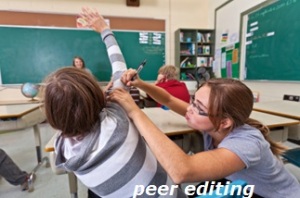🔒USE THE CONFIDENTIAL, SECURE PATIENT PORTAL TO ASK A QUESTION🔒
So how IS a peanut butter and jelly sandwich like mindfulness meditation?
“IT’S NOT!” (…Cue awkward silence . . . )
Okay! But we can imagine! Try this:
Peanut butter is sticky. So is attention. Just like peanut butter sticks to bread, we can stick our attention to anything we need to deal with. If we’re fascinated by something, it’s actually hard to scrape our attention OFF that thing. Like checking someone’s online status that they keep changing all day. Or getting to the next level of a computer game. But if there’s a task we would rather avoid, then we have to dig out LOTS of attention from the jar and glob it onto that nasty task (if only that would make it TASTE better!) until we’re done.
Jelly is floppy. So is relaxation. Ever seen jelly stand straight and tall? Me neither. Sometimes when we first wake up in the morning, we feel just like jelly. All relaxed and peaceful. If we want to get up and do stuff, first we have to stretch and flex, just to un-jellify our muscles.
So let’s say we have two slices of life. (LIFE?) Okay, let’s start with bread. And we want to fill the space between those slices with two things: peanut butter and jelly. It’s a no-brainer that we want good coverage. No big gaps. So we spread the PB evenly and flop the jelly all over. But we try to keep it on the bread. Not just spill globs over the edges. Same with meditation. Simple! Two slices of life, with a bit of time in between. (Time, space, whatever.) We just stick our attention onto ‘right now.’ We try to keep it from spilling over to other times. Most of us love thinking about times that are NOT right now. ‘Right Now’ is the hardest time to think about, in a weird way.
Next, we let our floppy relaxation spread itself, all over the same time-sandwich as our attention.
There’s one other way to explain all this. If you’ve read other stuff about meditation, like the book, Peaceful Piggy, you may have read about letting your breath just do what it ‘wants’ for a while. For most people, the breath is the easiest thing to pay attention to. –Without ‘doing’ anything, that is. It’s a very very old way of just recognizing that right now, you’re giving yourself permission to ditch, on all other times and just pay pure attention to ‘right now.’
So, usually, we don’t even think of full-on attention and full-on relaxation together. Or anyone spreading them all over each other. But here’s the trick. While we’re busy paying attention, we don’t have to actually DO ANYTHING. (WHAT?!) That’s right. Sure, it’s weird to think of paying attention but doing nothing. So it’s not quite totally nothing. Just nothing we have to THINK about doing. That’s where the breath comes in. It’s one of the things that our body CAN pretty automatically. We don’t have to work at it. (Okay, our bodies do other things almost automatically too. But we’re keeping it polite here!
Ever been so tired that you just HAD to do nothing? Maybe it was a ‘good’ kind of tired. Maybe you played a game so hard or got such a big chore done that YOU were done, but you felt oddly relaxed and you just enjoyed soaking up that relaxation. Nothing else was allowed into your mind or body. That feeling is close to what meditation feels like.
‘Noticing’ is an even better word than attention. All we have to do is keep quiet and keep ‘noticing’ what our breath feels like doing, in each moment. It changes a tiny bit, now and then. That’s got the sticky attention part going. What’s cool is that the floppy relaxation part kind of just spreads itself. We just let it.
If we notice some particular tense muscle somewhere, hey, flop some jelly on that part — okay not literally. Just let that part relax, especially. BUT: Just so we don’t fall asleep, we find the most comfortable-but-alert position we can. First time learning this, that might be sitting straight up. It might be in a chair or on a cushion, legs crossed or not. “Is there such a thing as TOO relaxed?” Well, only in meditation. If our PB & J sandwich has one whole jar of jelly in it, we won’t get to taste the normal-size layer of PB.
Same principle here: If we’re TOO relaxed, we can’t pay attention. We just fall asleep. The opposite is kind of disgusting too: A whole jar of peanut butter in your sandwich means you won’t get to taste the normal-size layer of jelly. (Same thing: If we work SO hard at paying attention, there’s NO WAY we can relax.)
‘Breath’ to the rescue. It’s totally enough, just to keep bringing our attention back to the breath. For sure, our attention will sometimes slop over a bit, to other times besides now (things that happened; things we have to do; things we worry will happen) kind of like a puppy that wants to run here and there to explore. We call our attention back gently and kindly, as we would that puppy. . . . Happy breathing!
Yours in health and development,
Ken McCallion, Registered, MA, CPsych Assoc
If you have questions or would like to see about an appointment, feel free to use the contact form, below.
–a ‘Use-Me-Now’ resource for teens, babysitters,
maybe parents:
So how IS a peanut butter and jelly sandwich like mindfulness meditation? “IT’S NOT!” (…Cue awkward silence . . . )
Okay, but we can imagine. Try this:
Peanut butter is sticky. So is attention. On purpose, we stick our attention to the thing that we focus on. Just like peanut butter sticks to a slice of bread. If we’re fascinated, it’s hard to scrape our attention off that fascinating thing. –Like getting to the next level of a computer game. If it’s a job we would rather avoid, we have to dig out LOTS of attention, to glob onto it, until we’re done.
Jelly is floppy. So is relaxation. Ever seen jelly stand straight and tall? Me neither. Sometimes when we first wake up in the morning, we feel just like jelly, all relaxed and peaceful. If we want…
View original post 683 more words














